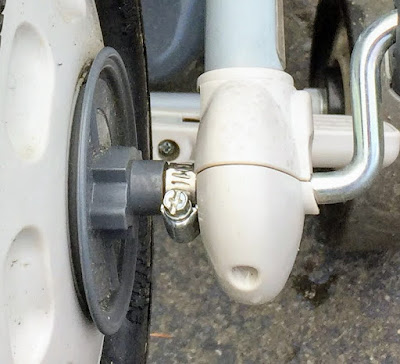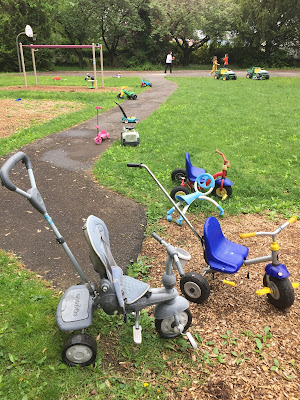The part of me that has always wanted to fight for our collective future has long been puzzled at how rare that impulse is. The destructive impact of climate change is increasing with each passing year, and yet energy conservation is rarely mentioned these days. There's some talk of solar panels and wind generators being put somewhere someday, but to stop pouring CO2 into the atmosphere, we must also collectively consume far less energy. It's been so drilled into us that we must feed the economy by consuming that it seems unnatural if not heretical to consciously consume less.
The motivation to consume less, at least in me, and despite all the indoctrination, comes from an understanding that machines are both our friends and our worst enemies. They serve in many wonderful ways, and yet their dependence on future-killing energy makes them at the same time our enemy.
This scene inside the Princeton Public Library tells one story of why we are losing the battle for the future. The cafe has been closed for nearly two years, and yet the display refrigerator unit on the right, the "Grab and Go", is still running. Has it been left on for two years, despite being empty? A library employee made it sound like it actually has.
This may be the same noisy display refrigerator that used to make it hard to hear whatever wonderful speaker had drawn an overflow audience to the Community Room. Its downsides--noise and energy consumption--made it problematic when the cafe was open. To see it running when the place is closed just deepens the sense of mourning for a world that seems not to know how to collectively fight for a collective future.
One refrigerator makes little difference in the world, and yet a battle is won through countless small acts by countless people who understand that they are part of a larger effort.
BTW: Any unplugged refrigerator needs to have its doors left partially open, to allow air to circulate.












